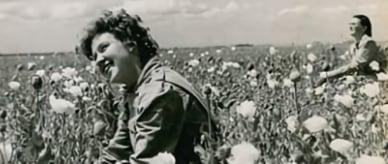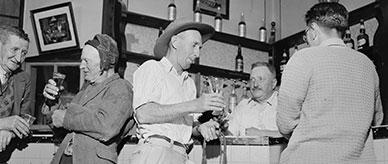As we adjust to the new realities of life during the COVID-19 pandemic, many of us have been facing challenges unprecedented in our lifetime. Fortunately, it looks like the days of empty supermarket shelves are behind us for now.
But let’s not forget that only a few generations ago, food and other commodities were so scarce that the Australian Government had to impose rationing to ensure that everyone had a fair share.
The Rationing Commission
The National Archives holds a huge amount of records from the Rationing Commission, which was established in 1942 to manage the supply of essentials on the home front during World War II.
The commission introduced rationing the same year to ensure that everyone, regardless of income, had enough to live on. Rationing curbed consumer spending and helped direct resources and labour towards the war effort.
Rationing was not fully lifted until 1950 – a long time to make do with less of life’s essentials. But on the whole, the Australian people accepted and were reasonably cheerful about the sacrifices they had to make.
‘The darning needle is a weapon of war’
Clothing was the first thing to be rationed.
In May 1942, Prime Minister John Curtin announced that rationing was coming and that a daily quota on sales would be imposed in the meantime.
In one of his Saturday evening broadcasts, Curtin pleaded with people to be prepared to mend and make do with what they had. ‘The darning needle is a weapon of war these days’, he declared.
The following Monday morning there was a stampede of shoppers. People fought and grabbed items of clothing at random, often without trying them on.
The shopping frenzy continued for weeks, even as Japanese aircraft were flying over Sydney and midget submarines penetrated the harbour.
Politicians and the media exhorted people to stop. ‘At such a time, how dared we think of hats and gloves, of trinkets and tablecloths…?’, demanded the Australian Women’s Weekly.
Obviously, full-scale rationing was justified. Each person was issued with 112 clothing coupons a year, and every item of clothing had a coupon value. A man’s suit required 38 coupons, but a pair of socks was only worth 4.
Coupons were surrendered to the retailer to ensure they weren’t used more than once. Everyone had to juggle their clothes purchases to make their 112 coupons last the whole year.
Sharing our food
Other goods to be rationed during the war were tea, sugar, butter, meat and petrol.
Butter was rationed at 1 pound (450g) per person per fortnight, and sugar at 2 pounds (900g) per person per fortnight. That might sound generous to us now, but it’s important to remember that the highly processed foods we eat today are already high in fats and sugars.
Meat rationing was the most complicated, because different cuts of meat had different coupon values. Housewives queued for long periods to consult the butcher on how to make the best use of their ration.
Meat rationing allowed Australia to export some of our meat to Britain, where it was badly needed.
How to make ‘mock sausages’
Advice on living with austerity measures was everywhere. Recipe competitions awarded cash prizes to the cleverest and most frugal meal ideas.
Although sausages were never rationed, Mrs W Maughan of Clayfield in Queensland won a prize from the Women’s Weekly for her recipe for ‘mock sausages’. The magazine generously declared that the recipe ‘should prove acceptable’.
To make the sausages boil one cup of rolled oats in ¾ cup salted water for 15 minutes. Then add finely chopped onion to flavour. Mix well, empty into basin. When cool add one beaten egg, pepper and herbs to taste, one cup of breadcrumbs. Shape into sausages, roll in flour, and fry in deep boiling fat till golden brown. Very tasty and a good substitute for meat.





![Pencil drawing: WRAN driver standing beside her utility vehicle [ute].](/sites/default/files/styles/feature_item/public/2020-04/th-feature-blog-rex-julius-9544589.jpg?h=8c713433&itok=P_lzo8tv)
